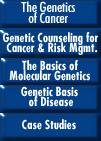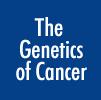
    |
Growth Factorsis the term for a class of gene products that play important roles in the regulation of cell division and tissue proliferation. Each growth factor has a specific cell-surface receptor. Binding of the growth factor to the receptor initiates or, in some cases, blocks cell division. Most growth factors regulate only certain types of cells and tissues. Control of Cell Division is an active process involving both stimulation and inhibition (by antagonists). Mitosis, for example, will not occur in the presence of active inhibition and the absence of stimulation. Growth factors regulate defined phases of the cell cycle. The two most important phases of the cell cycle are the transition from:
The transition from G0 to G1 is controlled by growth factors for:
An important growth factor regulating the transition from G1 to S is insulin-like growth factor, IGF-1. The stimulating effect of these growth factors can be opposed by such antagonists as:
Activation of a Growth Factor ReceptorA growth factor receptor is activated by binding to a specific growth at the cell's surface. The activated receptor, in turn, activates an intracellular protein (i.e., "substrate protein"). A receptor such as platelet-derived growth factor (PDGF) can stimulate a number of substrates including Ras protein, the Src protein (the name is derived from the tumor, a sarcoma, in which it was first found), or phospholipase C, a signal transmitter. AN EXAMPLE... RAS Then, Ras is inactivated by GTPase activation protein (GAP). If a gene mutation is present in either Ras or GAP, the time-limited aspect of the cell-stimulating signals may be lost...resulting in uncontrolled cell division which can lead to tumor formation. Types of Growth FactorsThere are Four Classes of Growth Factors:
|
Home Page
| Introduction: How to
use this site | Site
Map | Other Sites of
Interest | Contact |
Find Topics |
Primary Care Physicians
Menu | Nurse
Practitioners & Other Medical Professionals Menu| General Public Menu | Send E-Mail